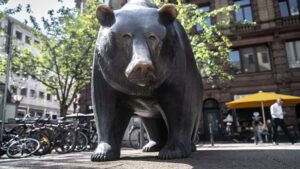Understanding Market Declines: From Corrections to Bear Markets
As the S&P 500 teeters on the brink of a 20% decline from its recent peak on February 19, 2025, talk of a bear market is heating up. But what does it really mean when we say the market has entered "bear territory," and who even came up with the terms we use to describe these events? At Extreme Investor Network, we believe that having a deeper understanding of these concepts can empower you as an investor.
A Common Misunderstanding: The 20% Threshold
You might think that the classification of market declines like "corrections" (10% to 20%) and "bear markets" (20% or more) was established by a prestigious committee of Wall Street experts. However, the reality is much simpler—and perhaps more interesting.
The framework we use today can be traced back to one individual: Alan Shaw. A significant figure in the world of technical analysis and co-founder of the Market Technicians Association, Shaw is credited with creating the basic guidelines that define these market terms. Louise Yamada, a protégé of Shaw, recalls how he established this easy-to-remember structure: anything less than a 10% decline is termed a consolidation, 10% to 20% signifies a correction, and a drop of more than 20% classifies as a bear market.
The Importance of Closing Prices
When gauging market declines, it’s essential to focus on closing prices rather than intraday fluctuations. According to S&P Dow Jones Indices, the S&P 500’s historic closing high was indeed on February 19, 2025, when it finished at 6,144.15. To officially enter bear market territory, the index would need to close at or below 4,915.32.
Interestingly, many investors mistakenly think that a market needs to reach this 20% threshold to be considered in a bear market. However, according to Tom McClellan, editor of The McClellan Market Report, a bear market "starts with the first downtick after the final price high." This means that the moment the S&P 500 hit that high, its decline was already moving into bear market territory, even if it hasn’t technically closed below the critical 20% mark yet.
What Lies Ahead?
But what happens next? Simply stating that the market is down 20% doesn’t provide much insight into future movements. McClellan advises that investors should "go with the trend, unless you have a compelling reason to go against it." Currently, the general sentiment suggests we’re in a downtrend but also implies that markets may be oversold, indicating a potential bounce could be on the horizon.
This brings us to the concept of a "bear market rally," which Yamada describes as a temporary price increase after a decline of 20% or more. Historically, these rallies average an 18% uptick over about 31 trading days. Yamada warns, however, that these rallies often lead to new lows before the market potentially stabilizes again.
Leverage Insights for Your Investing Strategy
At Extreme Investor Network, we think that understanding these market dynamics is not just academic; it’s crucial for making informed investment decisions. As we navigate through these turbulent waters, examining historical data and patterns can provide you with a roadmap to better navigate current conditions.
If you’re looking to take your investment game to the next level, remember to keep track of major market indicators, remain adaptable, and always have a solid strategy in place. The key is not to react hastily, but to respond wisely.
Whether you’re a seasoned trader or just stepping into the world of investing, understanding trends, corrections, and bear markets can give you the edge you need to succeed. Stay informed, stay engaged, and let’s make the most of the opportunities that the market presents—together!

